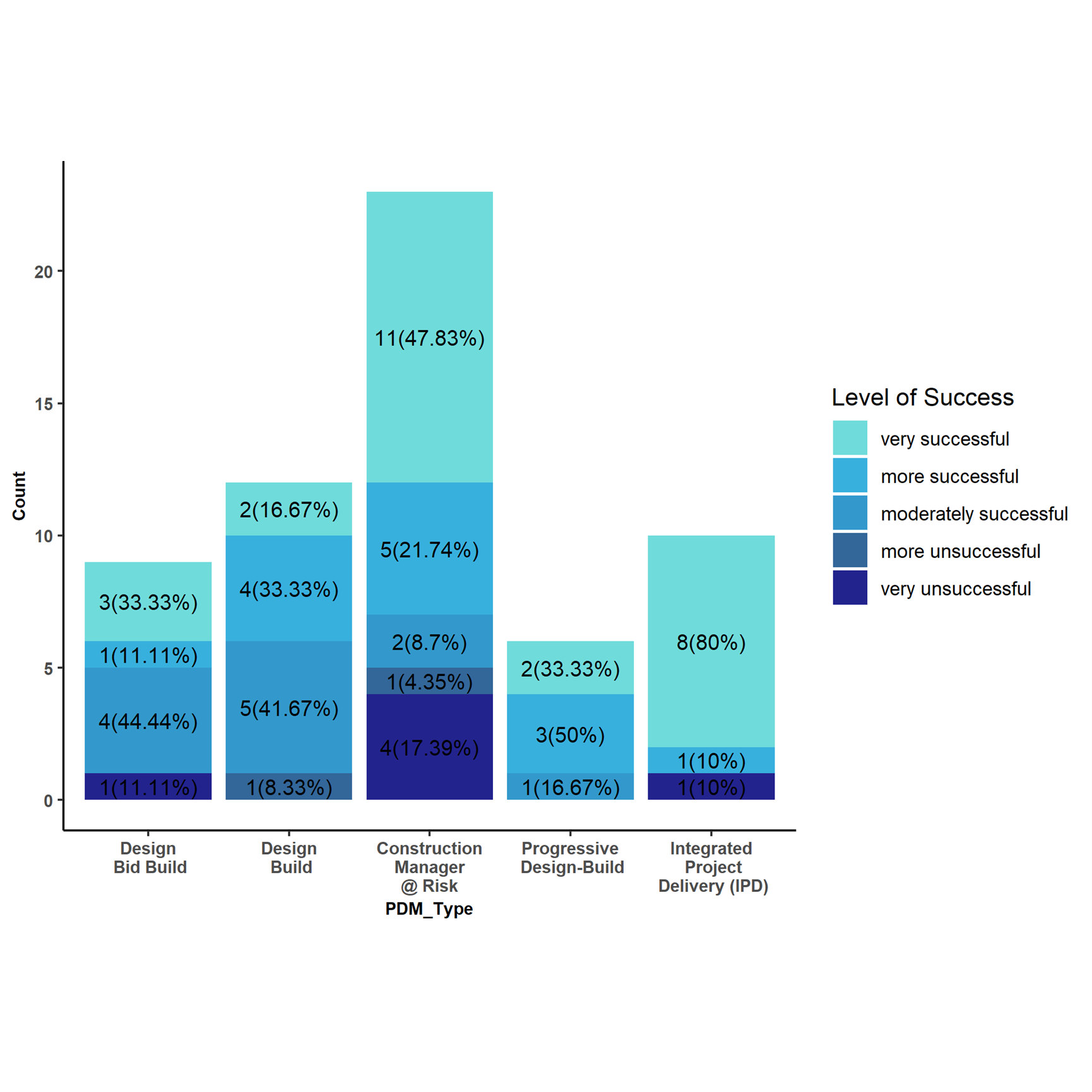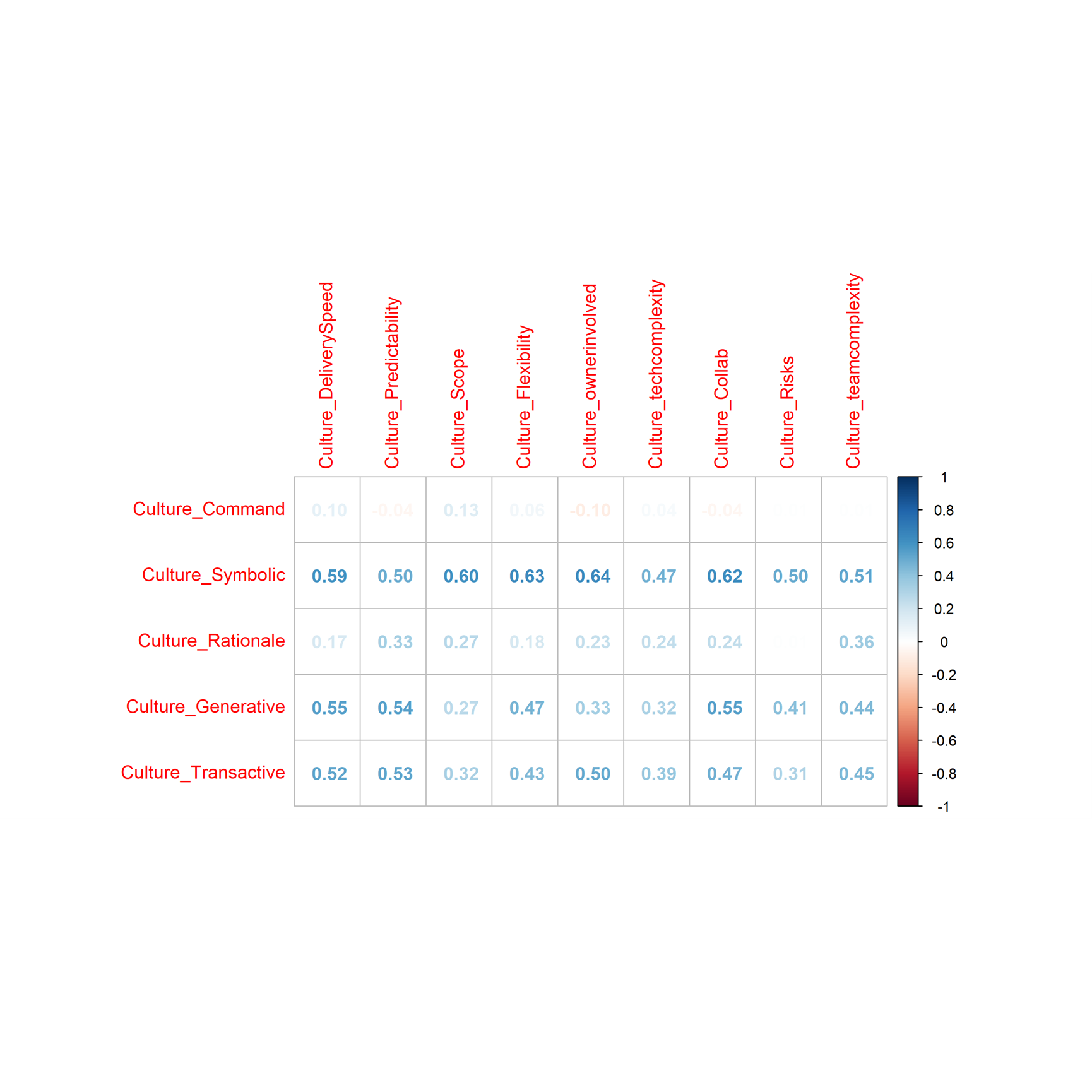Methodology
Our research sought to determine key owner decision-making characteristics that impact project delivery method outcomes. Based on our understanding of the impact, we developed a tool that owners and project teams could use to understand how an owner’s decision-making profile impacts outcomes for different project delivery methods.
To determine key decision-making characteristics, we conducted an extensive review of business, management, and organizational literature on decision-making, which covered decision-making speed, organizational change, and innovation. Out of this review, we identified fourteen important decision-making characteristics, eventually narrowing our selection down to seven that are most relevant to building owner decisions around capital projects. These seven became our Decision-making Profile Characteristics (DMPC). We then conducted an extensive review of literature related to project delivery methods (PDM) and PDM selection in architecture/engineering/construction (AEC). Out of this review, we identified nine factors affecting the success of a project. These became the Project Delivery Method Criteria (PDMC).
Next, we needed to assess how the DMPC impacted each PDMC. We conducted an industry survey of owners that asked participants about the decision-making characteristics that impacted project delivery selection. We also asked participants to reflect on a specific project they had worked on to reflect on the relationships between their DMPCs and the project outcomes. The survey resulted in 278 cases with 109 cases extracted for further analysis—consisting of 68 cases with 100% complete responses, 32 cases with 90% complete responses, and 9 cases with 80% complete responses. With these 109 cases we conducted data analysis including, but not limited to, data wrangling, data cleaning, data pre-processing, exploratory data analysis, data visualization, respondents and projects demographics analysis, Pearson correlation, and linear regression. Through the linear correlation analysis, we identified positive and negative correlations between specific DMPC and PDMC across all project delivery methods, with the exception of Integrated Project Delivery (IPD) for which the response number was too low to draw conclusions. These correlations indicated certain DMPC had positive or negative impact on PDMC. Correlations led to insights, which were coded as various levels of risks into the BOAT tool. In the cases where DMPC impact on PDMC was not clear, such as due to insufficient data, or due to a mix of positive and negative impacts, the BOAT tool reports “unpredictable risk.” For IPD cases we studied the distribution manually and determined recommendations based on the 10 reported cases, for which there was strong alignment in the type of owners using IPD delivery.
Throughout the project, our research team worked with our Industry Advisory Council on a monthly basis to discuss our research progress and obtain feedback on the work. Dialogue with the Industry Advisory Council helped our research team to refine our DMPC and PDMC definitions, as well as refine the final tool.
Limitations
Please note, the final tool should consider the following limitations. First, the 109 analyzed data points were not evenly distributed across all project delivery methods. Specifically, Progressive Design-Build and Integrated Project Delivery received a less than ideal number of cases for deriving meaningful statistical inferences. Second, the space (i.e., relationships) between DMPCs and PDMCs are complex and dynamic, whereas the current tool only reflects simple linear relationships between each DMPC and PDMC. Further analyses that explore (1) the interrelationships among DMPCs, and (2) the relationships between a combination of DMPCs and PDMCs are expected to shed light on the nuance of the complex and dynamic space between DMPCs and PDMCs, thereby resulting in a more meaningful tool.
Selection of Findings
- An organization’s Decision-making Style can make a difference on a project. Organizations with Adaptive Decision-making Styles are more likely to have a positive impact across all PDMC. Organizations with a Participatory Decision-making Style help support collaborative project teams.
- An organization’s Decision-making Culture can have an important impact on PDMC. For example, organizations with Symbolic Decision-making Cultures are more likely to have high owner involvement on a project, as well as a well-defined project scope that aligns with the organization’s mission and values. Organizations with Experimental Decision-making Cultures can be more supportive of increased project delivery speed and a collaborative project team culture.
- Distributed Decision-making Authority is well-aligned with many PDMC across different PDM. Distributed Decision-making Authority is particularly well-aligned with Early Collaboration between owner and team members and managing Stakeholder Complexity on Design-Bid-Build projects.


